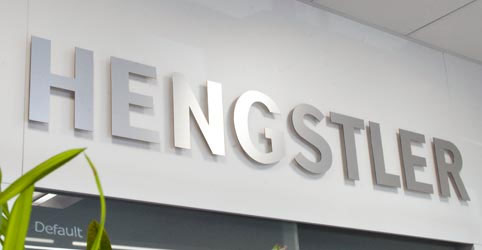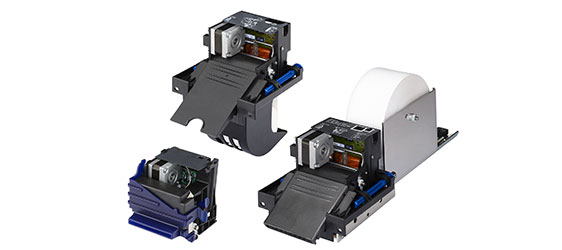Comparison: Thermal Printers vs Ink Jet Printers vs Laser Printers
Our first selection must be the printing technology. While there are around a dozen different printing technologies available, only a few lend themselves to kiosk printing applications. While you need to consider your application as a whole, the following would be our choices for the situations shown.
Printing receipts: We would probably use thermal printing, unless not allowed in geographical area/market, in which case we’d use impact dot matrix.
Printing wider documents in black and white: We would again use thermal printing due to the fast printout, and the fact that it’s always ready to print.
Printing wider color documents: We’d probably use laser printing or ink jet, depending upon available space and cost constraints.
How to Select a Printing Technology
Now let’s look at these technologies in more detail. Direct thermal printing is the dominant print technology used in kiosks and other unattended printing operations because it’s extremely reliable. They do not use toner or ribbons, and thus do not experience the ink spills or ribbon jams and tears that cause downtime. Direct thermal printers print by applying heat through numerous small heating elements on a print head (up to 2600 horizontally arranged dots) on the surface of temperature-sensitive paper. Paper is the only consumable, so thermal printers are restocked much less often, than printers that also require ink cartridges to be replenished.
Thermal Kiosk Printer Advantages
- It uses very few moving parts, making thermal printing very reliable.
- There are no expendables other than the paper, so there are no added costs for ink or toner cartridges, and no related service-call costs to change these cartridges.
- Thermal printers are always ready to go; there is no delay for the first printout or warm-up time.
- Since heating the dots makes no sound, thermal printing is very quiet.
- Thermal printing can be very fast; 250 mm/second (about 10 inches/second) is common for small, receipt-type printers and Hengstler printers run up to 350 mm/second.
- Various voltage options enable thermal printing in conjunction with battery-backed systems like on-street parking (typically 12 Volts).
Thermal Kiosk Printer Disadvantages
- Since the paper is designed to be heat-sensitive, it can be affected by extreme temperatures, and by some chemical exposures, including PVC plastic sleeves or some hand lotions.
- Thermal paper has a finite life. The image can fade over time, and the lifespan depends upon exposure to light and some of the factors mentioned above. Many available thermal paper grades, however, have a durability of 10 years and more.
- Thermal paper is a little more expensive than plain paper, though this is easily offset by eliminating the cost of ink or toner cartridges and its associated service calls.
You’ve certainly been exposed to thermal printouts; the clear majority of receipts at supermarket and department store checkouts, gas stations, ATMs and such are thermal.
You’re also probably familiar with laser printers. They are great for your office, providing excellent resolution and quality. A laser is used to scan a rotating drum of a special material, making the areas scanned “sticky” to toner. The drum rotates through a reservoir of toner and transfers it to the paper. Heaters “set” the toner so that it’s permanent. Individual sheets of paper are drawn from a stack and fed through the printer.
Laser Kiosk Printer Advantages
- Higher resolution printout means very clear printing and very precise graphics, useful for maps, photographic images, etc.
- Color printing possible.
- Sheet paper is available as a commodity item.
Laser Kiosk Printer Disadvantages
- Toner cartridge cost and associated service call.
- Paper width is generally limited to A4 or letter size, so laser is not a good choice where narrow paper would suffice, such as for receipting.
- Long time to first page after idle or power down mode: due to the heating that is a necessary part of the printing process, the time to print the first page can be long. For example, one black and white laser printer boasts a time to first page of only 8.5 seconds. That’s a long time for someone waiting in front of a kiosk.
- Heat buildup and power dissipation due to keeping the heater warm.
- Usually no roll paper can be used and cut but instead only sheet paper of a fixed length can be handled.
- Most common laser printers can only hold up to 500 sheets in a tray.
Ink jet printers’ work by spraying colored ink onto the paper as the printhead moves right and left across the paper. The paper is advanced after each pass of the printhead, and smart programming increases their speed by making rapid advances when no printing is needed.
Ink Jet Kiosk Printer Advantages
- Full-color printing creates very attractive output
- High resolution (usually better than thermal but not as good as laser)
Ink Jet Printer Disadvantages
- Ink cartridge cost and associated service call.
- Paper width is generally limited to A4 or letter size, so ink jet is not a good choice where narrow paper would suffice, such as for receipting. There are a few specialty ink jet printers that are designed to print narrower paper.
- Sheet paper: ink jet printers have the same shortcomings as laser printers regarding sheet paper.
- Ink cartridge clogging/alignment: ink jet printers tend to develop clogged nozzles from dried ink if not used for a protracted period. This can also manifest as a dot alignment problem. If printing takes place regularly, this is not usually an issue.
We’ll mention impact dot matrix printers here very briefly; they are used infrequently in kiosks and disappearing over time. A moving printhead has individual wires that are driven by solenoids and strike the paper through an ink ribbon. They are generally slow, noisy, and have low resolution only suitable for printing text contents.
We discussed selecting the right technology for your application. Now that we’ve chosen wisely, we’ll go over some paper-related issues.
Selecting the Right Design for Your Application
The HENGSTLER team is expert in matching printers to the application. Whether it’s gas pump receipts, bank statement printers, railway ticketing systems, kiosks, fire alarm systems, or just about anything else, we’ve seen it and can help locate and integrate the best-suited printer for the purpose needed. Moreover, we can support our customers effectively by offering tailor-made application projects.
Contact us today with your application or challenge

